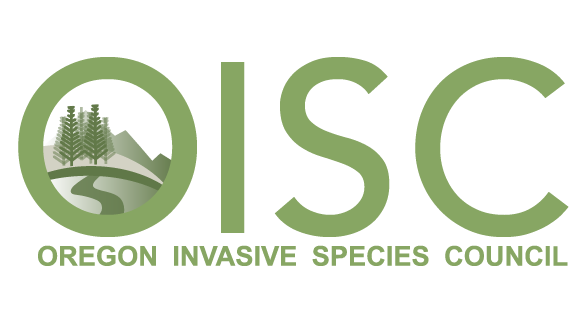The OISC Requests Nominations for 2020 Council Seats
/The Oregon Invasive Species Council (OISC) is seeking nominations for 8 member seats to serve a 2-year term January 1, 2020 - December 31, 2021. Could you, or someone you know, be a good addition to the OISC? Send us a nomination by November 20, 2019.
The OISC recognizes that many state, federal, and tribal governments, as well as local government agencies, private industries and non-governmental organizations, play a role in managing invasive species. In order to successfully protect Oregon from the impacts of invasive species, the OISC promotes collaboration between a wide range of fields and expertise.
Strong nominees will have experience or expertise that relates to invasive species prevention or control and/or specialize in one of the following diverse areas of interest: natural resource industries; wildlife management or conservation; environmental or outdoor education; K-12 education; environmental law; marine, freshwater, estuarine systems; parks and recreation; domestic or international trade; travel and tourism.
The council is seeking to appoint members representing the following categories of interest in 2020:
A member who represents an entity, regardless of the form of the entity with a headquarters or principal operations in Gilliam, Hood River, Jefferson, Morrow, Sherman, Umatilla, Union, Wallowa, Wasco, or Wheeler Counties
A member who represents an entity, regardless of the form of the entity with a headquarters or principal operations in Clatsop, Columbia, Lincoln, or Tillamook Counties
A member who represents an entity, regardless of the form of the entity with a headquarters or principal operations in Baker, Crook, Deschutes, Grant, Harney, Klamath, Lake, or Malheur Counties
A member who represents an entity, regardless of the form of the entity with a headquarters or principal operations in Benton, Lane, Linn, Marion, or Polk Counties
A member who represents an entity, regardless of the form of the entity with a headquarters or principal operations in Clackamas, Multnomah, Washington, or Yamhill Counties
A member who represents a native American or Indian tribe or association of tribes within this state
A member who represents an organization or association that advocates on behalf of private industry in this state
A member of the Public
Council members’ primary role is to support the advancement of Oregon’s Statewide Strategic Plan for Invasive Species. Members benefit from multi-agency communication and collaboration that the OISC provides through meetings, committees, events, and communication. Council members are expected to attend 2-3 meetings per year in various parts of the state, serve on at least one committee, participate in conference calls, and support communication with and/or convening of other interested groups to contribute to Council activities. Council members are not paid, but may be reimbursed for travel expenses associated with attending Council meetings. Membership is limited to two consecutive terms.
Nominations and questions about the process should be sent to coordinator@oregoninvasivespeciescouncil.org. The deadline to receive nominations is November 20, 2019. Complete nominations must include the following:
Individual’s name, title, phone, email, and mailing address
A brief description of the nominee’s qualifications (self nominations are acceptable)
A statement from the nominee that explains their interest, relative experience, and contributions they are willing to make to the Council. Nominee must specify the member seat(s) of interest.
Letters of support for the nominee are encouraged.
The council will notify appointees in December 2019 and welcome the new appointees at the first meeting of the Council in 2020, date to be determined.
OISC nomination information can also be found on the OISC Nominations page.



